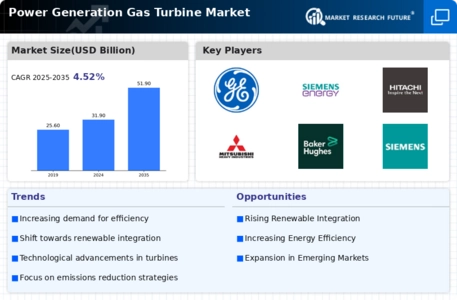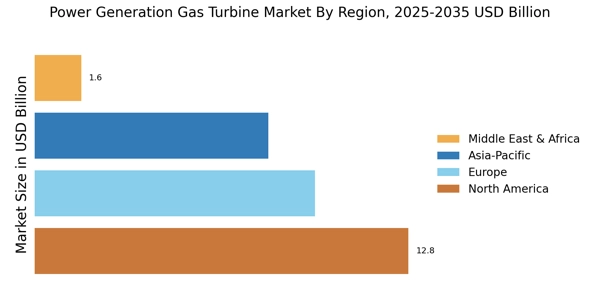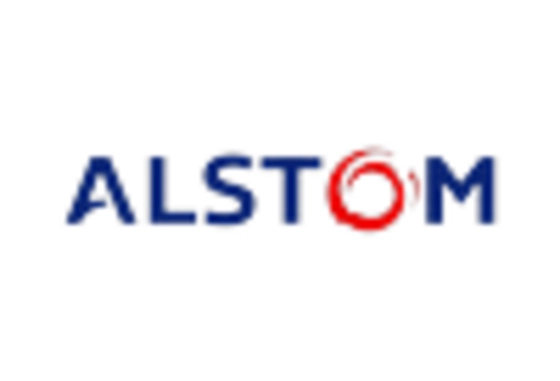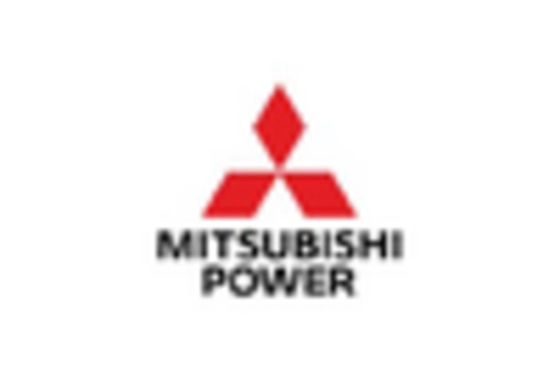The Power Generation Gas Turbine Market is currently characterized by a dynamic competitive landscape, driven by the increasing demand for efficient and sustainable energy solutions. Key players such as General Electric (US), Siemens (DE), and Mitsubishi Power (JP) are at the forefront, each adopting distinct strategies to enhance their market positioning. General Electric (US) focuses on innovation in turbine technology, particularly in enhancing efficiency and reducing emissions, while Siemens (DE) emphasizes digital transformation and smart grid integration. Mitsubishi Power (JP) is actively pursuing regional expansion, particularly in Asia, to capitalize on the growing energy needs in emerging markets. Collectively, these strategies contribute to a competitive environment that is increasingly focused on technological advancement and sustainability.
In terms of business tactics, companies are localizing manufacturing and optimizing supply chains to enhance operational efficiency and reduce costs. The market structure appears moderately fragmented, with several key players exerting significant influence. This fragmentation allows for a variety of competitive strategies, as companies seek to differentiate themselves through innovation and customer service, rather than solely on price.
In August 2025, General Electric (US) announced a partnership with a leading renewable energy firm to develop hybrid gas turbine systems that integrate solar power. This strategic move is significant as it positions General Electric to leverage the growing trend towards hybrid energy solutions, potentially enhancing its market share in the renewable sector. The collaboration is expected to yield advancements in turbine efficiency and emissions reduction, aligning with global sustainability goals.
In September 2025, Siemens (DE) launched a new digital platform aimed at optimizing gas turbine operations through AI and machine learning. This initiative is crucial as it reflects Siemens' commitment to digitalization, enabling customers to enhance operational efficiency and reduce downtime. The platform is likely to strengthen Siemens' competitive edge by providing advanced analytics and predictive maintenance capabilities, which are increasingly sought after in the energy sector.
In July 2025, Mitsubishi Power (JP) secured a major contract for the supply of gas turbines to a new power plant in Southeast Asia. This contract underscores Mitsubishi's strategic focus on expanding its footprint in high-growth regions, particularly where energy demand is surging. The successful execution of this project could enhance Mitsubishi's reputation and market presence in the region, further solidifying its competitive position.
As of October 2025, current trends in the Power Generation Gas Turbine Market indicate a strong emphasis on digitalization, sustainability, and AI integration. Strategic alliances are increasingly shaping the competitive landscape, as companies collaborate to enhance technological capabilities and market reach. Looking ahead, competitive differentiation is likely to evolve, with a shift from price-based competition to a focus on innovation, advanced technology, and supply chain reliability. This transition suggests that companies that prioritize these aspects will be better positioned to thrive in an increasingly complex and demanding market.


















Leave a Comment